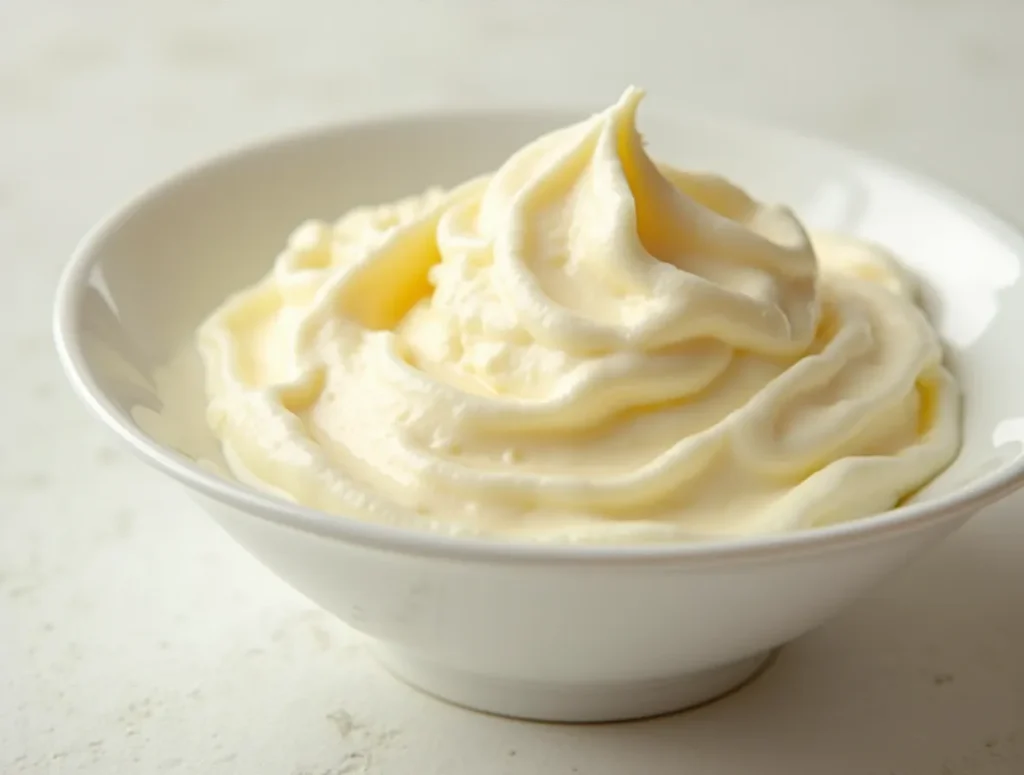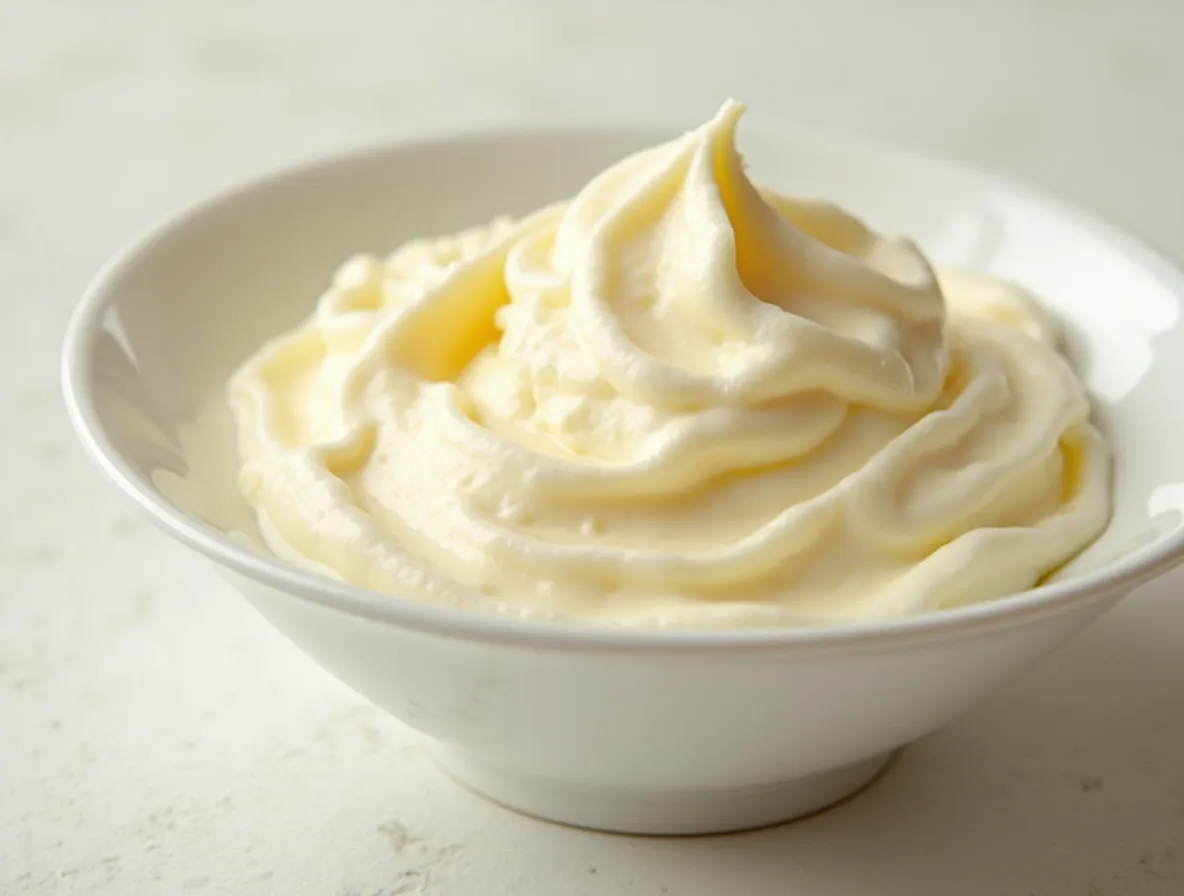Best clotted cream recipe for scones lovers
Have you ever tasted the luscious, velvety goodness of clotted cream? If not, you’re in for a treat! Whether you’re hosting a traditional afternoon tea, making a special dessert, or just craving something rich and indulgent, this homemade clotted cream recipe will be your new go-to. But why is it so special? What makes clotted cream different from other creams? Let’s dive into the story behind this luxurious spread and discover how you can easily make it at home!
Clotted cream is a staple in British cuisine, often paired with scones, jam, and tea. But don’t let the British origins intimidate you—making this rich, creamy spread is surprisingly simple and requires just a few ingredients. If you’ve ever been to a tearoom, you’ve probably tasted this luxurious topping. But imagine being able to recreate that exact texture and flavor in your very own kitchen. Ready to learn how? Let’s get started!
Ingredients: Essential Ingredients for Clotted Cream
When it comes to making clotted cream, the ingredients list is short and sweet. You don’t need fancy tools or ingredients to get started. Here’s what you’ll need:
| Ingredient | Amount | Notes |
|---|---|---|
| Heavy Cream | 2 cups | Full-fat, not ultra-pasteurized |
| Whole Milk | 1/4 cup | For added richness |
| Optional: Vanilla Extract | 1 tsp | Adds a subtle flavor (optional) |
Substitutes for Key Ingredients
While heavy cream and whole milk are the main ingredients for clotted cream, there are a few substitutions you can try based on your preferences or dietary needs:
- Non-Dairy Version: If you’re lactose intolerant or vegan, use coconut cream or a plant-based heavy cream (like oat cream or soy cream) in place of heavy cream.
- Sweetener: If you want a slightly sweeter version, you can add a tablespoon of honey or sugar, though it’s traditionally not sweetened.
Equipment Needed: Essential Tools for Making Clotted Cream
Making this creamy spread doesn’t require much equipment. Here’s what you’ll need:
- Oven-safe Dish or Casserole Dish: This is where your heavy cream will bake.
- Large Spoon or Whisk: To gently stir the cream.
- Bowl for Storing: A clean bowl for storing your finished clotted cream.
- Oven: The key to getting that perfect, thick, clotted texture!
Optional Equipment for Enhanced Results
If you want to take things up a notch, consider these tools:
- Thermometer: To make sure the cream is at the right temperature throughout the process.
- Cheesecloth: Some people like to strain their clotted cream to remove any excess liquid.
Step-by-Step Instructions:
Now for the fun part—let’s break down the process of making this creamy spread, step by step.
Step 1: Preheat the Oven
Start by preheating your oven to a low temperature, about 180°F (82°C). This low heat is crucial for the slow-clotting process, which allows the cream to thicken and form those signature clots.
Step 2: Pour Cream and Milk into Dish
Pour your heavy cream and whole milk into an oven-safe dish. Mix them gently with a spoon or whisk to combine. No need to stir too vigorously—just a gentle swirl will do.
Step 3: Bake for 12 Hours
Yes, you read that right—12 hours! It might sound like a long time, but this is the key to getting that rich, clotted texture. Pop the dish into your oven and let it bake slowly, undisturbed. It’s a good idea to do this overnight, so you wake up to the magic happening!
Step 4: Cool and Skim Off the Clotted Cream
After 12 hours, your cream should have thickened and formed a golden crust on top. Let it cool for a bit, then gently skim off the thickened cream with a spoon. Don’t worry if there’s still some liquid left behind—that’s just the whey, and you can discard it or use it for baking.
Step 5: Store and Serve
Transfer your creamy spread into a clean bowl and refrigerate it. It will thicken further as it chills. Serve it with your favorite scones, jam, or use it as a topping for desserts like pies or cakes!
Tips & Tricks for Success: How to Make Clotted Cream Even Better
- Don’t Rush the Baking Time: The key to perfect clotted cream is time. Don’t be tempted to turn up the heat to speed things up. The low, slow process is what makes the cream so rich and thick.
- Use Fresh Cream: Always use fresh, high-quality cream for the best results. Steer clear of ultra-pasteurized cream, as it doesn’t yield the same texture for clotted cream.
- Avoid Stirring Too Much: Stirring too vigorously can break up the clotted texture. Be gentle!
- Refrigerate Overnight: The cream will firm up as it cools, so give it time to chill before serving.

Common Mistakes to Avoid
- Not Letting It Cool Enough: Make sure the cream cools fully before you try to scoop off the clots. If it’s too warm, it won’t form properly.
- Using Low-Fat Cream: Low-fat cream won’t give you the rich, thick consistency you’re looking for in clotted cream.
Time-Saving Tips for Clotted Cream
- Prep the Cream the Night Before: You can prepare the cream overnight, allowing it to cool and set by morning. This way, you can just store it in the fridge and have it ready to go.
Variations and Substitutes:
Want to switch things up a bit? Here are some variations and creative twists for your creamy spread:
Vegan Clotted Cream
For a vegan version, try using coconut cream in place of heavy cream. This will give you a rich and creamy alternative that’s perfect for dairy-free diets.
Flavored Clotted Cream
Add a splash of vanilla extract or a spoonful of honey to your cream before baking for a subtle flavor boost. You could even experiment with lemon zest or cinnamon for a fun twist.
How to Serve Clotted Cream: Perfect Pairings
This rich, creamy spread is traditionally served with scones, especially during afternoon tea. But don’t stop there! Here are some ideas for other ways to enjoy your homemade treat:
- Pair with Scones: The classic choice. Serve with fresh jam, like strawberry or raspberry, for a delightful treat.
- Use on Pies: Top your favorite fruit pies or tarts with a dollop of clotted cream for added richness.
- On Pancakes or Waffles: Give your morning breakfast a luxurious twist by adding clotted cream instead of butter or syrup.
Best Side Dishes to Pair with Clotted Cream
- Fresh berries
- A cup of hot tea
- Light salads or finger sandwiches
Nutritional Information: How to Make Clotted Cream Healthier
While this rich cream is a delightful treat, it’s best enjoyed in moderation. Here’s a breakdown of what you can expect from a typical serving:
- Calories: Approximately 100-150 calories per tablespoon
- Fat: 10-15g (mostly saturated)
- Protein: 1-2g
- Carbs: Less than 1g
How to Make Clotted Cream Healthier
You could try using lighter creams or non-dairy options to cut down on fat and calories if you’re looking for a lighter alternative. However, for the full experience, it’s best enjoyed as is—rich, creamy, and indulgent!
Conclusion: Why You’ll Love This Clotted Cream Recipe
There’s something magical about the texture and richness of homemade clotted cream. Once you make it, you’ll be hooked—and your friends and family will be too! Whether you’re hosting a special tea party or just treating yourself to something delicious, this simple yet indulgent recipe will elevate any occasion.
Share Your Clotted Cream Experience!
Now that you know how to make this rich, creamy spread, it’s time to get in the kitchen and try it yourself. We’d love to hear how it turned out! Did you pair it with your favorite scones? Add a creative twist? Drop a comment below and share your experience. Don’t forget to share this recipe with friends and follow us on social media for more mouthwatering recipes!
FAQs
1. What is the difference between clotted cream and whipped cream?
It is made by heating full-fat cream, causing it to form clots or solid clumps. It’s much thicker and richer than whipped cream, which is just air whipped into cream.
2. How long can I store clotted cream?
It can be stored in the refrigerator for up to 5 days. Be sure to keep it in an airtight container.
3. Can I freeze clotted cream?
While it’s not ideal to freeze this rich cream, it can be done. Just keep in mind that the texture may change after thawing, but it will still be delicious in baked goods.
4. Can I make clotted cream without an oven?
Traditionally, this creamy spread is made in an oven, but you can try using a slow cooker or a double boiler to replicate the slow heating process.
5. What can I serve clotted cream with?
This creamy spread pairs wonderfully with scones, fresh fruit, pie, cakes, or even as a topping for pancakes or waffles! The possibilities are endless!

